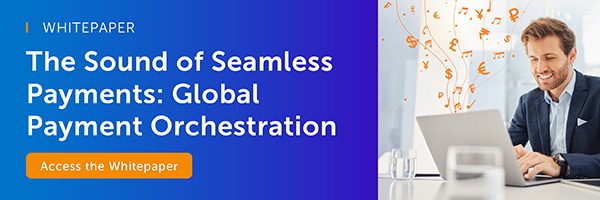Growing businesses are always seeking ways to optimize revenue while minimizing spend. One strategy that supports this goal is payment optimization. According to S&P Global Market Intelligence, 45% of surveyed respondents stated their organization will be increasing focus on payment optimization strategies in the next year, primarily due to changing customer expectations and technological innovations. The risks of not doing so are missing revenue, incurring unnecessary fees and losing customers.
As organizations seek payment optimization, they may think a payment gateway alone is enough. But to benefit from payment optimization, payment orchestration is key. Below, we explore the differences between payment gateways and payment orchestration platforms and how to choose the right payment solution for your business.
What Is a Payment Gateway?
A payment gateway is the fundamental infrastructure that enables businesses to accept electronic payments — both online and in physical settings. Essentially, it bridges the space between a merchant’s website or point-of-sale system and various financial institutions, facilitating the secure transmission of transaction data between all parties. This includes the customer, merchant and acquiring bank.
For example, when a customer makes a transaction, the merchant payment gateway securely collects the individual’s payment information and sends it to a bank for processing and verification. When approved (or declined), the payment gateway sends a confirmation message to the merchant, which signals the end of the transaction.
What Is a Payment Orchestration Platform?
Traditionally, payment orchestration software is middleware businesses use to manage disparate payment services. Companies still have multiple relationships with multiple vendors to meet their various payment needs for different countries, various use cases, etc.
But a next-gen payment orchestration platform lets businesses have one relationship with one vendor that includes payment orchestration and payment processing without sacrificing payment optimization. Modern payment orchestration platforms have relationships with multiple banks around the world and have intelligent payment routing and failover built-in, as well as value-added services that assist in getting the most out of payments.
Put simply, next-gen payment orchestration platforms provide everything necessary for merchants to accept global payments, supporting all use cases, in a single integration, contract and account with payment optimization to help decrease costs, increase sales and improve customer satisfaction.
Key Differences Between Payment Gateways & Next-Gen Payment Orchestration Platforms
Both payment gateways and payment orchestration platforms integrate and support various payment options to complete the transaction process. However, as mentioned above, a payment orchestration platform brings more control, efficiency and functionality to payment systems.
Gateways typically rely on a singular payment processor to process and verify relevant cardholder data when executing a transaction. Next-gen payment orchestration, on the other hand, includes logic that evolves simple payment processing to payment processing with payment optimization.
Essentially, the key difference between the two platforms comes down to the functionality and flexibility of each. Payment orchestration platforms are typically more flexible, enabling merchants to adapt their payment structure to global expansion, new use cases, customer preferences and additional payment types. Gateways are unable to do this and typically support a single payment use case. Payment orchestration is more integrated and optimized, empowering merchants to achieve better outcomes for themselves and their customers.
| Payment Gateway | Next-Gen Payment Orchestration | |
| What It Does | Bridge between eCommerce website and acquiring bank. | Acts as a payment management platform, enabling merchants to optimize global payments in addition to processing payments. |
| Key Functions | • Authorize payments • Performs settlements | • Optimizes payments for the highest authorization rates at the lowest costs • Streamlines payment operations • Reduces payment errors • Increases payment security • Offers unified global reporting |
| Supported Use Cases & Locations | Usually supports one use case, one geography. | • Provides the currencies and payment methods to enable you to sell anywhere • Supports multiple use cases • Use cases can include subscriptions and recurring billing, virtual terminal and payment link for invoices and more |
| Value-Added Services | Payment gateways only provide payment processing. | Value-added services include chargeback management, fraud prevention, tax calculations, etc. |
Embrace a Better Way to Accept Payments with BlueSnap’s Global Payment Orchestration Platform
For some smaller companies that sell locally, a simple merchant payment gateway may be all that’s needed to support your customers. However, growing global businesses require a modern payment orchestration platform that is both powerful and flexible enough to support the business fully. That’s where BlueSnap comes in.
BlueSnap’s Global Payment Orchestration Platform is designed to help businesses optimize payments wherever they sell with value-added services that can be turned on and off by country, by product, by issuer and more. With BlueSnap, you get:
- Increased authorizations and lower costs
- Support for multiple use cases
- Value-added services
- Reduced technical debt since you only have one integration

Related Resources:

